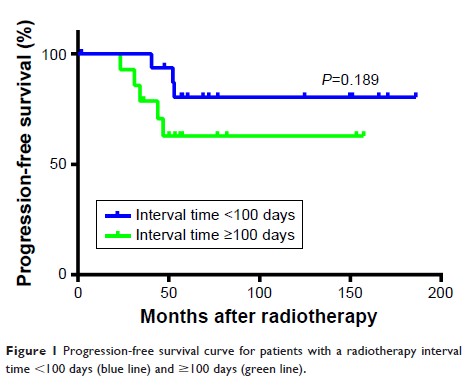9 7 8 1 6
论文已发表
注册即可获取德孚的最新动态
IF 收录期刊
- 3.3 Breast Cancer (Dove Med Press)
- 3.4 Clin Epidemiol
- 2.5 Cancer Manag Res
- 2.9 Infect Drug Resist
- 3.5 Clin Interv Aging
- 4.7 Drug Des Dev Ther
- 2.7 Int J Chronic Obstr
- 6.6 Int J Nanomed
- 2.5 Int J Women's Health
- 2.5 Neuropsych Dis Treat
- 2.7 OncoTargets Ther
- 2.0 Patient Prefer Adher
- 2.3 Ther Clin Risk Manag
- 2.5 J Pain Res
- 2.8 Diabet Metab Synd Ob
- 2.8 Psychol Res Behav Ma
- 3.0 Nat Sci Sleep
- 1.8 Pharmgenomics Pers Med
- 2.7 Risk Manag Healthc Policy
- 4.2 J Inflamm Res
- 2.1 Int J Gen Med
- 4.2 J Hepatocell Carcinoma
- 3.7 J Asthma Allergy
- 1.9 Clin Cosmet Investig Dermatol
- 2.7 J Multidiscip Healthc

硬纤维瘤患者分期放疗的单一机构经验
Authors Luo J, Jin K, Qian S, Ma X, Pan Z, Yao W, Zhang Z, Guo X, Yu X
Received 2 October 2018
Accepted for publication 3 January 2019
Published 7 March 2019 Volume 2019:12 Pages 1741—1748
DOI https://doi.org/10.2147/OTT.S189449
Checked for plagiarism Yes
Review by Single-blind
Peer reviewers approved by Dr Cristina Weinberg
Peer reviewer comments 3
Editor who approved publication: Dr Leo Jen-Liang Su
Purpose: This
study aimed to assess the feasibility of split course radiotherapy (SCRT) and
reports long-term outcomes in patients with desmoid tumors (DT).
Patients and methods: Between
2001 and 2004, 31 patients with recurrent (n=19) or primary large desmoid fibromatosis
(≥10 cm) (n=12) who were treated with SCRT were retrospectively analyzed. All
patients were treated with two phases of radiotherapy with a median interval
time of 99 days (range: 81–122 days) and a median total dose of 6,399 cGy
(range: 5,013–7,039 cGy). The median dose for the first phase was 3,969 cGy/22
Fx (range: 2,999–4,305 cGy), and 2,495 cGy/14 Fx (range: 1,982–3,039 cGy) for
the second phase. Progression-free survival (PFS) in response to radiotherapy
was evaluated using the Kaplan–Meier method and compared using the log-rank
test. The prognostic factors associated with survival were evaluated by
univariate and multivariate analyses.
Results: The
median age of all patients was 30 years (range, 7–58 years). With a median
follow-up of 60.4 months (range, 2–187 months), eight patients experienced
disease progression after treatment. The PFS rate at 3 and 5 years for the
whole population was 90% and 71.3%, respectively. PFS for patients with split
course of <100 days or ≥100 days interval was 100% vs 78.6% at 3 years,
and 80.4% vs 62.9% at 5 years, respectively (P =0.189). In multivariate analysis, the
radiotherapy (RT) interval time was an independent prognostic factor
for PFS (≥100 days vs >100 days, HR 11.544, 95% CI 1.034–128.878, P =0.047). PFS was
not significantly influenced by age, gender, surgery, tumor location, RT
technology, or RT dose. Radiation-related acute complications occurred in
nine (29%) patients after RT, and RT-related long-term complications
occurred in three (9.7%) patients.
Conclusion: SCRT with
an appropriate treatment interval (<100 days) is well tolerated by DT patients with favorable long-term outcomes.
Keywords: split
course radiation, desmoid tumors, local control
